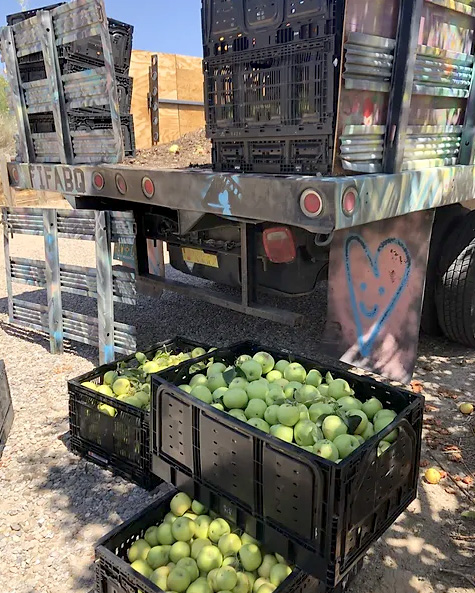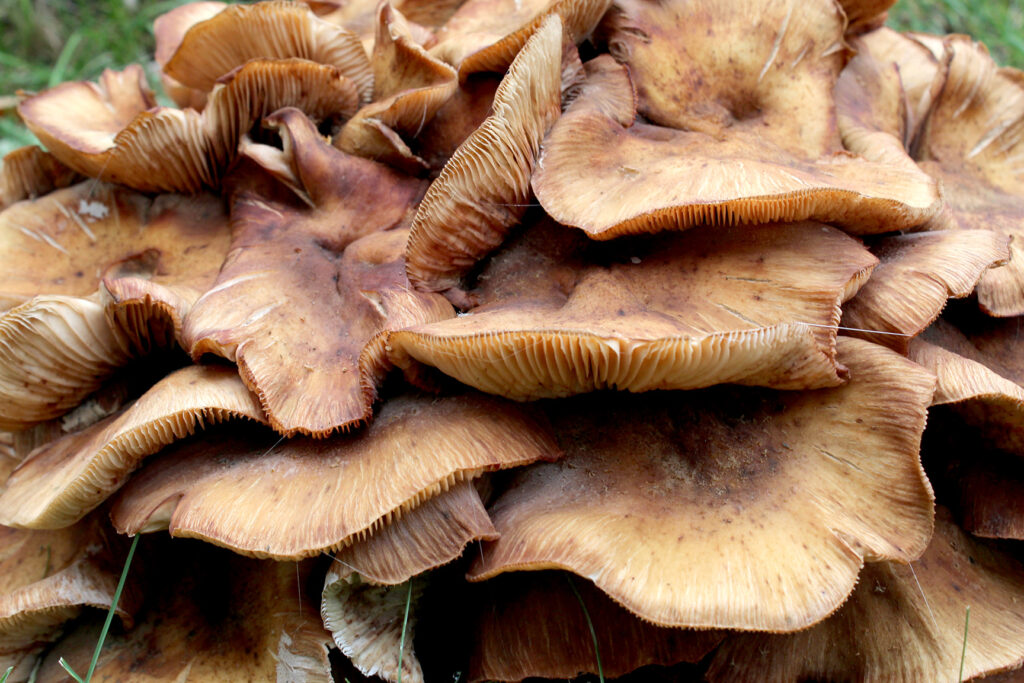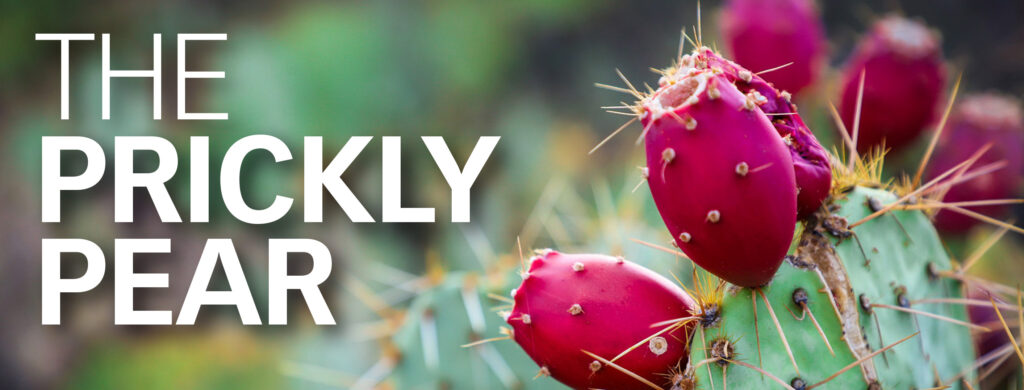
Send us your favorite photo



By Donna Detweiler

Food Is Free Albuquerque (FIFABQ) is a “gleaning organization that supports social empowerment through the growing and sharing of fresh food.” The project began nine years ago when three women noticed fruit going to waste on private land in their community. Erin Garrison, Trista Alters, and Sam Henning asked neighbors if they could harvest with their children. From there, the opportunities grew beyond what the founders could gather themselves, and they enlisted other friends and volunteers to meet the demand for pickers and contacted food pantries about taking the extra fruit. By 2022 the harvest from private homes, farms, and orchards totaled over 100,000 pounds.
If a property owner would like to donate their fruits or vegetables through FIFABQ, they can
sign up on the website fifabq.org to either have volunteers do the picking or to harvest themselves and have FIFABQ pick up for distribution. A minimum of 50 pieces is expected. A lead harvester will call the site before the scheduled harvest to assess how many pickers will be needed and when the likely peak time for harvest will be. Volunteers are then told a meetup spot from which they will caravan to the actual address. This system protects the privacy of donors and prevents volunteers from jumping in ahead of the official harvest date. Pickers may take home some produce for personal use in exchange for their work.
The balance of the take is then offered to the organization that can best use it, based on the amount and ripeness of the produce. Recipient organizations include shelters, social service agencies, churches/synagogues, food pantries, and senior centers. Some fruit is better suited to jam, animal feed, or compost than to fresh eating, and crab apples, mulberries, and prickly pear are not harvested as part of FIFABQ.
Volunteer pickers register on the website, sign a liability waiver, provide their own transportation, and follow the leads’ instructions regarding ladders and other safety protocols. This year a grant has enabled FIFABQ to pay its lead harvesters.
Annual events sponsored by FIFABQ include a spring seed share, which this year involved 450 people and resulted in 8000 seeds distributed, some of which were donated by local nurseries. FIFABQ also maps the locations of produce trees in Albuquerque, has organized a used book giveaway and coat drive during the winter holidays, and built accessible gardens for persons with handicaps.
For more info, you can check out FIFABQ’s Facebook page or an interview with co-founder Erin Garrison by The Paper. at https://abq.news/stories/food-is-free-albuquerque,5929.
A mushroom is the reproductive part of the mycelium of a fungus. When the edible reproductive part is above ground, we call it a mushroom; when the reproductive part is underground, we call it a truffle. Since the latter are much harder to find, we mostly settle for hunting the visible mushroom. Mushrooms are not plants – in fact, in some ways they have more in common with animals as they require oxygen.

New Mexico is a remarkable place for finding mushrooms since there are so many micro-climates, from desert to alpine mountain tops. Each niche in the land has its own species of mushrooms. The total number of mushroom species in New Mexico is unknown, but David Augustyniak, a mycologist from the Art FarmUNIncorporated, was able to identify 500 species in our state last year! Mapping the species is an important scientific endeavor. In the next year, David hopes to collect and clone local strains of New Mexican fungi to better identify them and be able to offer new ones to the community.
We are learning more and more about the role of fungus and their mycelia in healthy soil. The future of forests and our food chain depend on healthy soil. The international organization Fauna Flora Funga (FFF) encourages countries to protect fungi as they become endangered species. The polypore group of mushrooms in the Pacific Northwest is already on the endangered list. Polypores are leathery and large – specimens have been found weighing up to 290 pounds!
Fungus need certain things for growth and fruiting, for expample, healthy air is critical since fungi need oxygen and release carbon dioxide. They need the right food source, as different species have evolved to use different sources. The amount of moisture and the right level of humidity dictates whether a certain species could survive in the desert. Also, each species has adapted to a particular range of temperatures.
Forays to help people identify and search for edible mushrooms are organized by the New Mexico Mycological Society. The Society meets from March to December, and they sponsor regional forays, mostly during the monsoon season in July, August, and September. About one in three years is good for gathering mushrooms.
“It is hard to motivate people to care about something they do not know about or understand,” according to FFF, so while we may make fun of the “fungus among us,” their critical role in our future is not a joke. The book review of “Finding the Mother Tree,” in Issue 30 of the mid Rio Grande Times highlights this.
This article was written with input from David Augustinyak.

Prickly Pear is in the Opuntia genus; all 300 of the species in that genus can be found in arid areas of the Western Canada, US, and Mexico. The flat pads are called nopales in Spanish, and the fruits are called tunas. They are a good year around food source and have been used for eons by the Indigenous peoples of North America. In the Fall, the ripe prickly pears were smashed up, made into a flat cake, dried and used by tribes as a food source during winter.to prevent starvation.
According to Denee Bix, the Navajo nutritionist who owns Tumbleweeds Nutrition, a cup of smashed pears has only 60 calories but 5 grams of protein, and is high in Vitamin K and Calcium and low in carbohydrates.
The plant is honored by its incorporation into Mexico’s flag. An eagle, snake, and prickly pear cactus are seen in the middle of the national flag. It is based on the Aztec legend that an appropriate place for its capital city (now Mexico City) would be found by looking for an eagle eating a snake while sitting on a cactus.
Most colonizers in the US ignore the plant, probably because of their intimidating sharp spines and small, hairlike prickles called glochids. You can remove glochids from a tuna by rubbing it in the sand, roasting it, or rubbing it with a towel. Red tunas are the most prized. Some small businesses make prickly pear jam, chips, beverages, and salsa.
Lilia Avila, who sells through the Three Sisters Kitchen, shares her recipe for Prickly Pear salsa.
2-3 prickly pears – clean off the spines with cloth or knife
2 tomatoes
2 hot peppers (jalapeños, serranos, or green chiles)
½ onion
1 clove garlic
GRILL the above until blackened. Cut the prickly pear in half lengthwise and remove the seeds with a spoon. Add
¼ cup cilantro
Pinch of salt
Pinch of sugar
BLEND all above in a food processor . Enjoy on chips.
Prickly pear has a parasite called the cochinilla insect. These insects live in a white tunnel along the nopal and use the plant for water and food. According to Mexican shipping records in the 17th century, insects had more in value by weight than silver when shipped to England.. The British used the bright red dye from crushing these insects to dye their now famous cloth for their army uniforms, the Red Coats.
The annual Prickley Pear Festival features Indigenous knowledge of this fall fruit combined with many workshops on current uses. The festival is held usually in September at the Guiterrez Hubbel House at 5945 Isleta SW. The workshops are free. Time to try something new. People can live more sustainably in the mid Rio Grande Watershed.